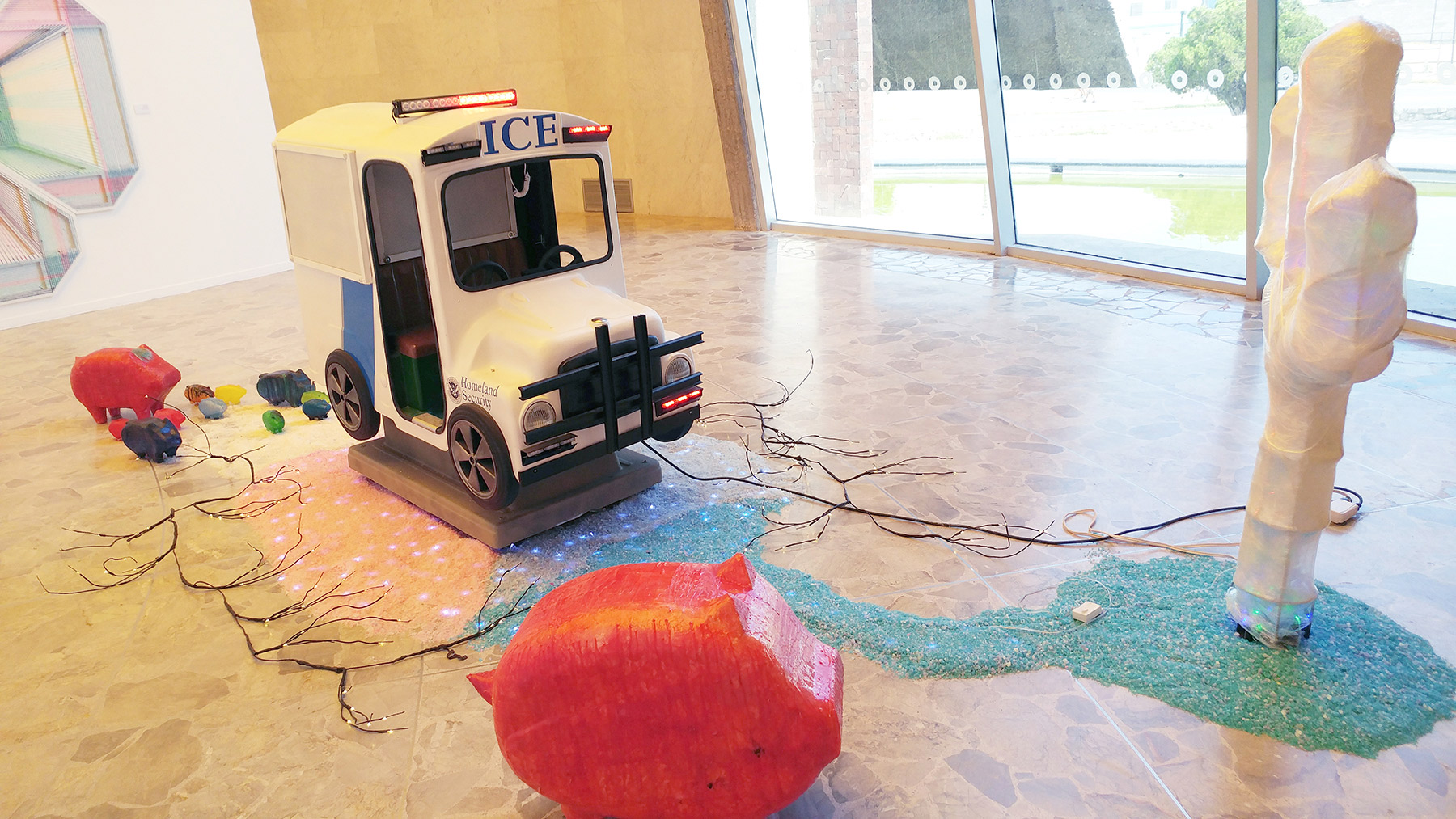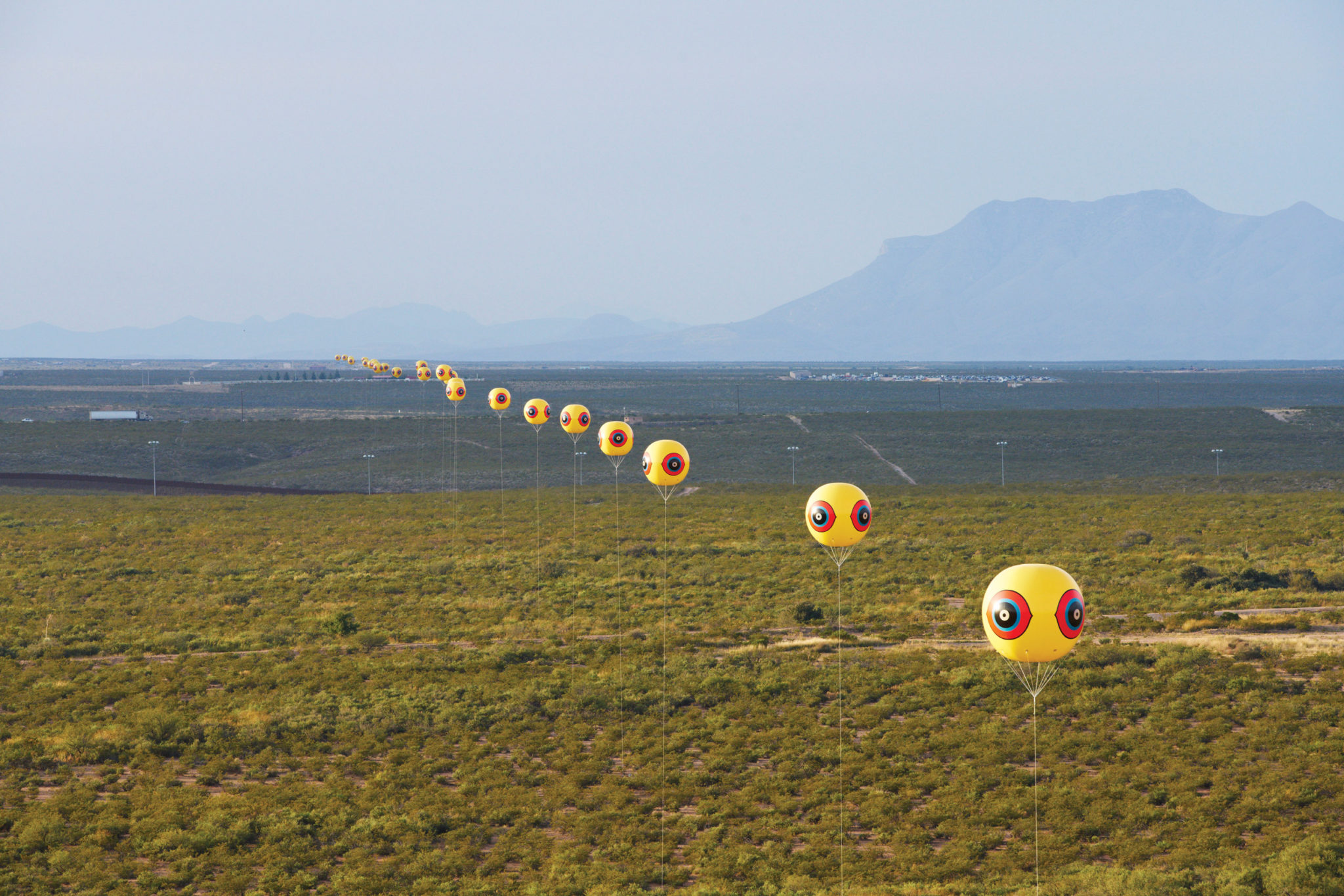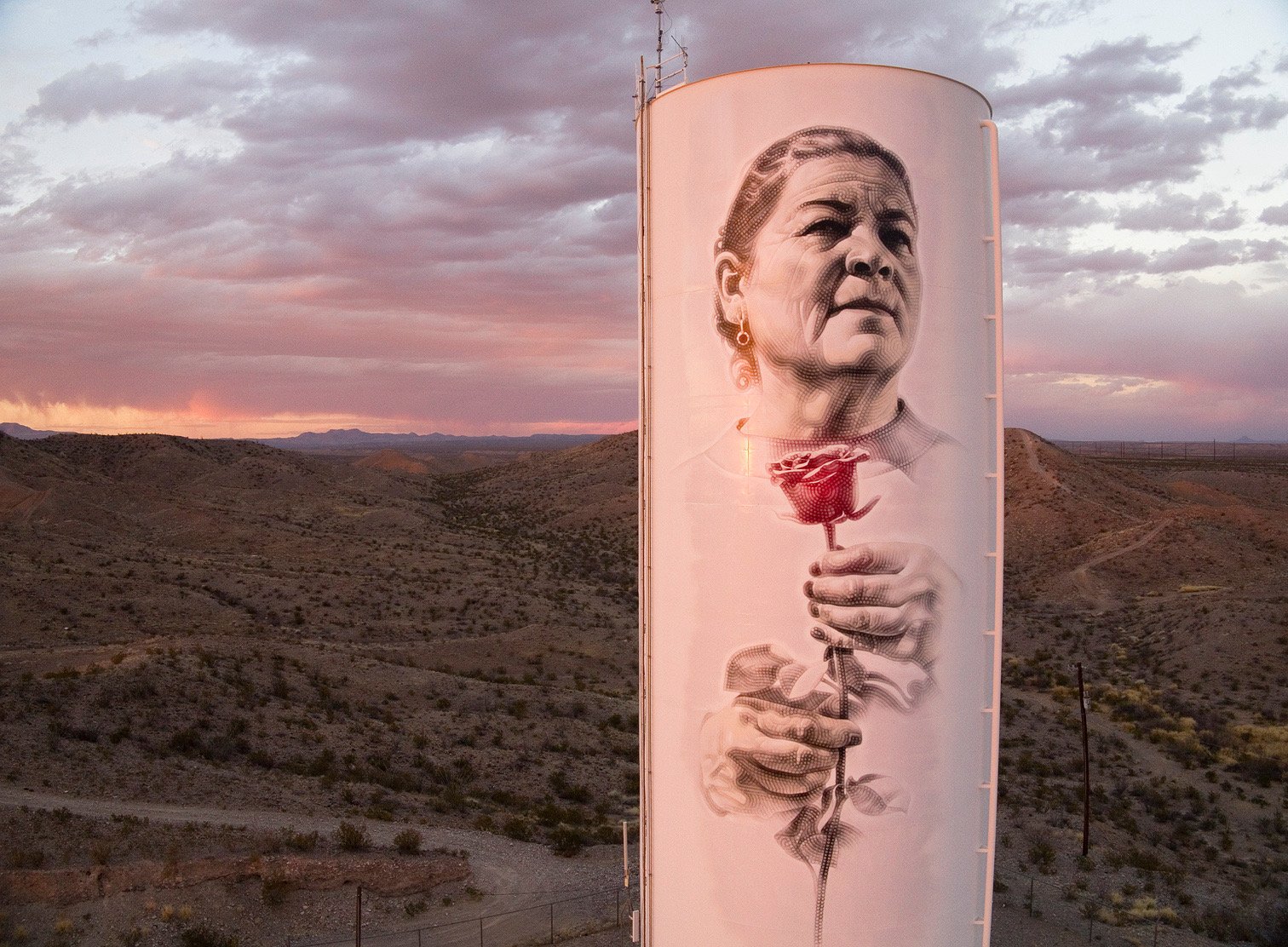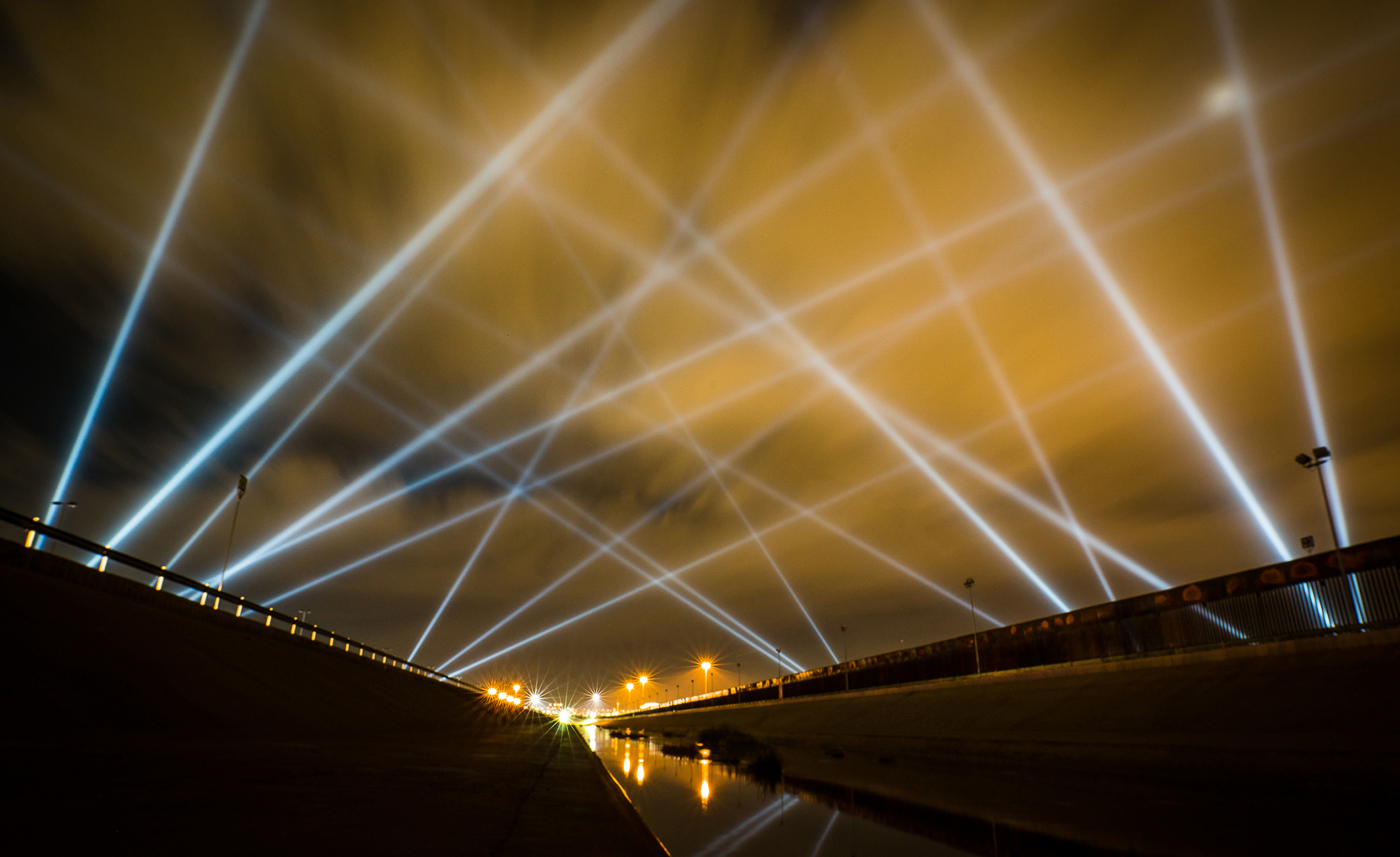
Artist Rafael Lozano-Hemmer on the Importance of Telling Complex, Nuanced Border Stories
A massive public art project lit up the sky over El Paso and Juárez this month, prompting conversations both funny and serious, political and personal.
Rafael Lozano-Hemmer hates searchlights. They evoke surveillance and fear, and in the El Paso-Juárez borderlands, where his most recent artwork debuted this month, the U.S. Border Patrol uses them to hunt down migrants. Yet the Mexico City-born artist, whose work is fraught with contradictions, has incorporated the lights into his large-scale interactive art installations for more than two decades. “I find searchlights absolutely abhorrent,” he says. “That’s why I must work with them.”
High-wattage searchlights form part of Lozano-Hemmer’s ambitious installation project Border Tuner, which for 12 days this month virtually connected people from Juárez and El Paso. The public was invited to operate the searchlights installed at six stations on both sides of the Rio Grande. When two beams of light crossed from opposite sides, microphones and speakers automatically switched on to create what Lozano-Hemmer calls “bridges of voice and light,” allowing people to talk with each other across the wall separating the two cities.
At dusk each night, lines snaked around the listening stations as people waited to take part in a public conversation with someone from the other side. The powerful beams of roving white lights formed vivid, intersecting geometrical designs visible from 10 miles away. Those prompted cross-border conversations, either as individuals or in small groups, usually in Spanish or Spanglish. Sometimes the topics of discussion were political. Many residents on the American side of the river got on the mic to express their pain and disgust with Trump’s anti-Mexican rhetoric. One evening, two women—one in El Paso, one in Juárez—broke out into song spontaneously when they discovered a mutual love of the Mexican rock band Reik. They sang louder and louder as listeners cheered them on.
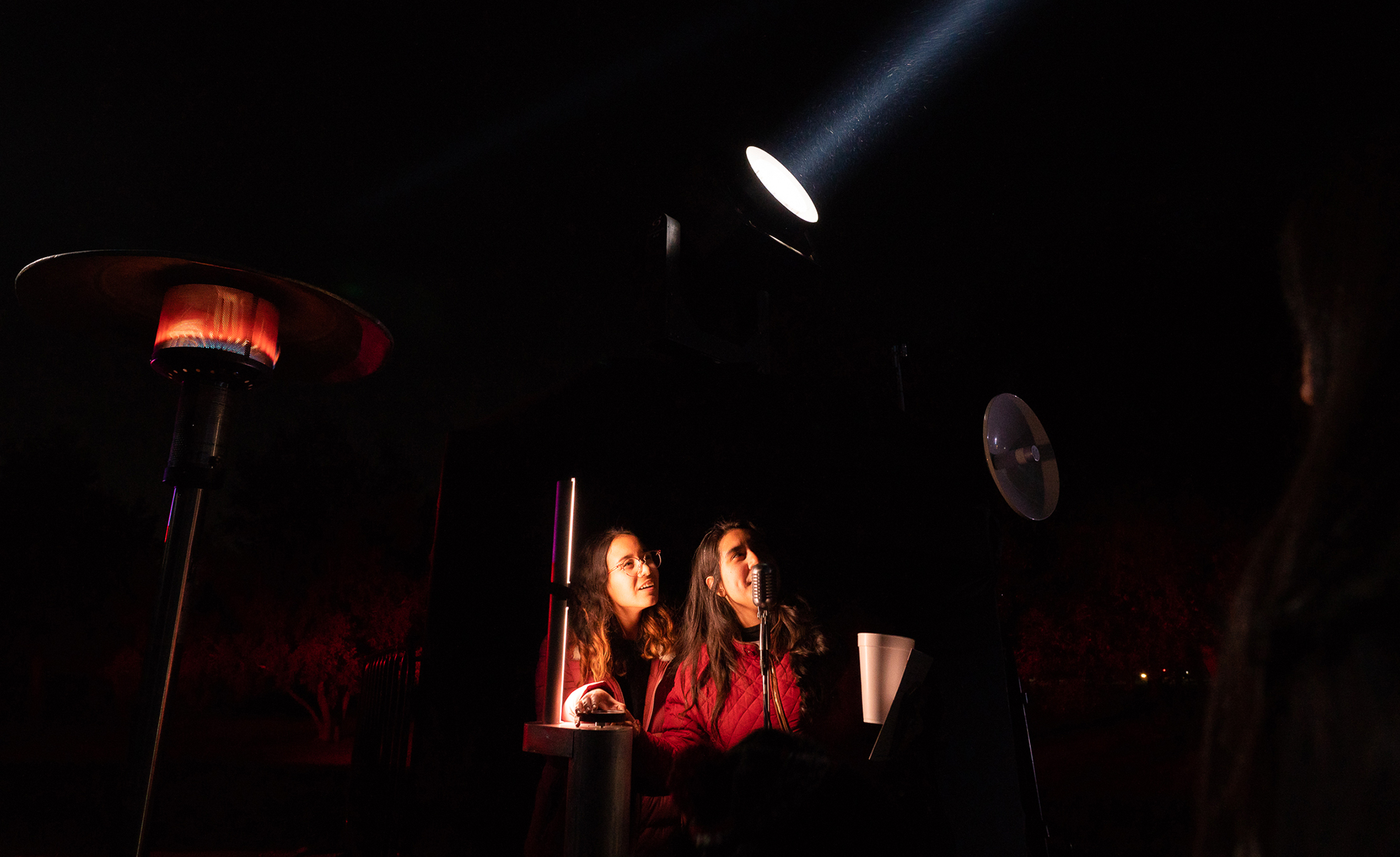
The unpredictable nature of these conversations enthralled Lozano-Hemmer. He remembered a woman in Juárez flirtatiously asking an El Paso man if he ever visits her city. “No, it’s too dangerous,” he said. “It’s not,” the woman answered. “Plus, if I show you around, you’re going to have a good time. ¿Estás guapo?”
Lighthearted moments like these were frequent, but so were expressions of grief. “Two minutes later someone gets on the mic and they express grueling stories about about how the divide of the metropolis, the separation, the historical injustice affects them,” Lozano-Hemmer says.
Each night of Border Tuner also included programmed events when all the microphones tuned into conversations by invited guests, including fronterizo poets, activists, musicians, historians, and leaders of the Tigua, Apache, and Rarámuri indigenous communities from both sides of the border. Lozano-Hemmer is frustrated that the national media, especially on the U.S. side, has mostly ignored the complexity of life on the border. “It is as if the entire media apparatus can only hold one story of the border,” he says. “And that story is destitution and violence and racism and militarization and all these things. This is the only story that sells newspapers.”

Some local artists and community members had mixed feelings about Border Tuner. Edgar Picazo, who served as programming director for the project, is from Juárez but lives El Paso. Picazo, a photographer and arts magazine publisher, characterizes the mega-installation as an officially sanctioned feel-good event, a “superficial” symbolic bridge that the local political and economic elites can get behind “without actually doing anything to attack the urgent problems of the border.” He and other participants spoke openly with Lozano-Hemmer about the fact that though the project highlighted artistic and cultural connections in both countries, “Those networks were already here before. We were the ones with the connections; he wasn’t the one who brought them.”
Lozano-Hemmer, who now lives in Montreal, says he learned a lot from these honest discussions. He doesn’t want his work to be just another form of “artwash, a form of cooptation where art is used to pretend that the people’s voices truly count, when we know they don’t because we know that the only thing that counts are the vested interests of corporate groups and lobbyists.” He characterizes this kind of art as “a weapon of mass distraction.”
He also understands that he isn’t setting up new channels of communication between El Paso and Juárez. Nearly 20,000 pedestrians and 36,000 cars flow between the two cities every day; families frequently shop or visit relatives on the other side, and schoolchildren walk across with their backpacks. “This project is not about building bridges. We are highlighting that those bridges already exist,” he says.

The Mexican-Canadian artist admits that he has had to think about issues on the border that he hasn’t had to deal with when he creates large-scale installations in cities like Berlin or New York. “I’ve understood that one of the major problems in the region for local artists and communities is that privileged artists like myself have come here and opportunistically have benefited from the energy and edginess of this place,” he says. “They’ve capitalized on it without leaving behind any kind of legacy. Or there are other artists who come here with an attitude of paternalism and condescension.”
The hardest lesson Lozano-Hemmer says he’s learned from this experience is about letting go of his creation. “[Fronterizo novelist] Willivaldo Delgadillo said there’s a moment where the artists should disappear,” he says. “I’m trying to recuse myself from what’s happening so that it can have a life of its own. That’s why it’s kind of humbling because the piece is on, and I’m just one more person who is out there listening.
“But it’s not easy for a megalomaniac like myself,” he says with a smile. “I’ve tried to find my way. I don’t think I’ve found it yet.”
Read more from the Observer:
-
‘East Texas Rivers Could Become a Boiling Pot for Mussels: The humble bivalves may not look like much, but they act as crucial natural filters across the state’s waterways—and they’re severely threatened by climate change.
-
A Chain Reaction: Luby’s is in trouble. Can the iconic cafeteria chain endure?
-
I’ve Lived in East Austin for 60 Years, and I Don’t Recognize it Anymore: As gentrification reshapes my neighborhood, I fear we’re losing something of real value to our city.

